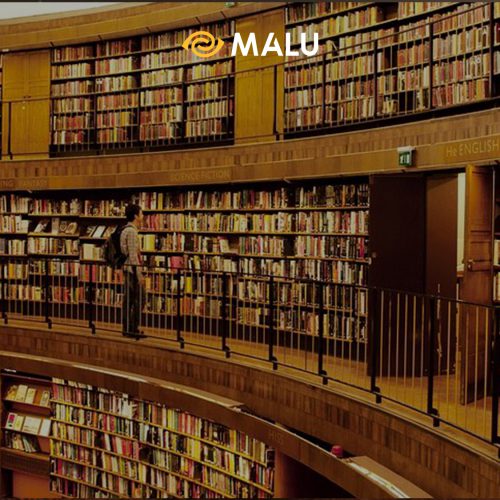
SEO has played an important role in Digital Marketing for a long time now. SEO is the key to success for many social media campaigns, the ultimate goal to attract a large amount of traffic. SEO also contains a lot of technical terms that not everyone can grasp. So what are the common SEO terms?
Here are 50 basic SEO terms or, more precisely, 50 frequently asked SEO questions, and are briefly answered below to give you the best overview possible. Wish you soon “SEO to the top”
>>> Everything you need to know about Content Marketing
50+ Basic SEO Terms
1. What is SEO? And why is it important?
Reply. SEO or Search Engine Optimization is any action used to improve the position of a website, product, service, or other type of content on a search engine page. It is considered as a natural and free channel in marketing campaigns.
The importance of SEO stems from the fact that companies want more traffic to their website. Search engine ranking is important because users focus on the first 5 results of a search query. What’s more, users trust that the results with the first position are trustworthy, and verified by Google.
2. What is a search engine?
Reply. A search engine is a website-based software system that focuses on finding and locating relevant information on the Internet. In other words, search engines respond to user queries, giving them a list of search results.
3. Some search engines
Reply. Names of some search engines: Google, Bing, Yahoo, Coccoc(Vietnam)
4. Who is the founder of Google?
Reply. The founders of Google are Larry Page and Sergey Brin.
5. When was Google founded?
Reply. Google was founded on September 4, 1998
6. What is a domain?
Reply. On the internet, a domain is simply a part of a website’s address, and acts to describe a website.
For example www.maludesign.vn, maludesign.vn is domain
7. What is domain extension?
Reply. The domain extension refers to the last symbol of the website address. For example, .edu is an extension domain specifically for educational institutions, used to categorize categories.
8. What is a website?
Reply. Websites consist of many pages or content document formats accessible on the Internet. Websites are usually identified by their domain name and address.
9. What is a Web server?
Reply. A web server is a host computer whose IP address and domain name are displayed when a user requests via http.
10. What is web hosting?
Reply. Web hosting refers to any service that provides space on the Internet. Web hosting allows your website to be seen by users on the Internet. There are many types of hosting services today to suit the diverse needs of website developers.
11. What is Crawling?
Reply. Crawling involves an automated process by a search engine to collect information and post its ranking results. The bot will scan the website’s pages, look for related keywords, links, and content, and then bring the information back to the server for indexing. The company will build sitemaps for bots of search engines to easily crawl.
12. What is Index?
Reply. The indexing process works after the crawl is finished. Google will rely on algorithms to index and decide the website position for that keyword.
13. What is SERP?
Reply. Search Engine Result Page – SERP refers to the results displayed when a user searches for a query. In addition to the list of results, the SERP may include paid Google ads.
14. What are natural results?
Reply. Organic results in SEO refer to the list of websites that are most relevant to a user’s search query. Achieving high rankings on organic results is the task of every SEO person.
15. What are the paid results?
Reply. Paid results in SEO involve advertising activities placed in different positions on the SERP. Pays Google to be displayed for certain terms, keywords, and display when users search.
16. What is “Google Suggest”?
Reply. Google will give referrals related to user’s search query in the toolbar when they type any keyword. That recommendation is based on user search volume.
17. What is Onpage SEO?
Reply. On-page SEO involves all activities on the website to achieve higher rankings, more friendly with search engines. On-page SEO is the work of optimizing the content, as well as the HTML source code format of every page on the website. Some examples such as: meta tag, tile tag, meta description, heading tag, ..
18. What is Offpage SEO?
Reply. Off-page SEO is related to off-site activities that also support search engine rankings. For example: social networks, link building, ..
19. Definition of keywords?
Reply. Keyword in SEO refers to keywords that appear in the content on the website to help users search by performing queries on the engine.
20. What are long tail keywords?
Ans. Long tail keywords, niche keywords are phrases usually consisting of 4 words or more, for high precision queries. The use of long-tail keywords is applied by many SEO experts to attract quality traffic to the website instead of other random traffic, thereby increasing the conversion rate.
21. What are LSI keywords?
Reply. LSI keywords or Latent Semantic Indexing are words that have similar or related meanings and often go together based on the user’s search query. This keyword helps Google understand the content of the article without mentioning the main keywords.
22. What is the Heading tag?
Reply. In SEO, the heading tag is used to divide items into sections of content on the page. There are 6 heading tags in SEO ranked in order of importance from h1 to h6.
23. What is Page Title?
Reply. Page title – page title, is a sentence to describe the content of your page. The page title appears at the top of the URL and at the top of the web browser. It is a key component of SEO to correctly summarize the content on the page, it is often optimized with keywords and related information to drive traffic to the website.
24. What is a URL?
Reply. Uniform Resource Locator or URL are phrases used to identify website addresses on the Internet.
25. URL friendly?
Reply. Friendly URLs are used to optimize the structure and words on the URL to improve the indexing process of the website. SEO techniques, such as keyword selection and word length on URLs, will help improve your website’s ranking position. Google says that the first 3-5 words on a URL carry more weight, so keep your URLs short and simple, always adding your target keyword above the URL.
26. What are meta descriptions?
Reply. Meta descriptions or meta tags used to describe the content on the web page. This line of description appears on the search page as a preview of the user’s content. Meta tags are usually about 150 characters long, provide a summary of the content, and you should also add your keywords for optimization.
27. What is Backlink?
Reply. Backlinks are links that help users move from one website to another. These links also play an important role in SEO. When Google notices that you have quality backlinks pointing to your website, your website will be ranked higher.
28. What are internal links?
Reply. Internal links are links in the website placed in articles, sections on the page. It helps search engines crawl information and content easily, and can navigate users on the page, keeping readers on the website for a long time.
29. Why are backlinks important in SEO?
Reply. With Google, low-quality backlinks will not help your website’s rankings. On the contrary, quality backlinks, placed on sites with reputable domains, providing useful relevant content will improve the website’s ranking in SEO.
30. What are the most important factors for Google to rank?
Ans. According to Andrey Lipattsev, Chief Strategy Officer at Google, the three most important factors based on the ranking algorithm are:
- Content
- Backlinks
- RankBrain
31. What is robots.txt?
Reply. Robots.txt is a way to help search engine bots learn about your site, while disallowing them from accessing any part of it.
32. What is XML Sitemap?
Reply. XML sitemap is a map for your website to help search engines determine the number of pages on the website, the frequency of updating information, the content, to be able to index your website better.
33. Check if Google indexed or not?
Reply. There are 2 ways to check if your page is indexed by Google or not
1) You can check on Google Webmaster tools
2) You can check by typing site:domain.com
34. What is a 404 error?
Reply. When the URL is changed or no longer exists, this link will return a 404 error. Google will not penalize sites for a 404 error. However, if the search engine crawls these error links, it will. reduces traffic to the website, and indirectly reduces rankings.
35. What is anchor text?
Ans . Anchor text is text that contains a link that redirects the user when clicked. These texts are usually underlined and blue, but you can completely change the color in the HTML code. Anchor text also plays a certain role in SEO support if it is used correctly, based on information related to the article content.
36. What is the Image Alt tag?
Answer . Google Bots cannot load images on the website. Hence the alt tag to help it understand the content of the image. The alt tags also function optimally for image ranking on Google.
37. Google Webmaster Tools/Google Search Console?
Answer . Google Search Console provides many outstanding features to support website managers, to collect errors on the page, existing backlinks as well as support indexing for the website, ..
38. What is a 301 Redirect?
Reply. 301 redirects are one of the most effective ways to transfer the power of an article or a website to another location. When a URL is changed, using a 301 redirect will redirect the user to the new address. Search engines will also transfer the values of the old website to this new website.
39. What is Google Analytics?
Reply. Google Analytics is one of the most effective analytical tools in SEO, helping website managers track and monitor traffic sources on their site. And best of all, it’s free.
>>> Learn More About Google Analytics
40. What is Google PageRank?
Reply. Google PageRank is an index that calculates website quality based on the quality of backlinks. In other words, backlinks are an important factor in PageRank. Recently Google has also stopped using PageRank to rank websites.
41. Domain Authority?
Reply. Considered as one of the factors that have a great influence on SEO, website reputation is an index developed by Moz, ranking websites on a scale of 1-100. The higher your DA, the higher you will rank on Google, and of course more traffic. You can check the domain’s authority directly on Moz .’s website
42. What is Google Panda?
Reply. Google Panda is a change in Google’s search results algorithm in 2011. This change is intended to reduce the rankings of poor quality websites, and return high rankings to valuable sites.
43. What is Google Penguin?
Reply. Google updated Penguin in 2012 to identify websites with signs of spam. Penguin’s goal is to penalize pages that perform black hat SEO and excessive keyword stuffing. Conversely, the algorithm will also reward white hat SEO sites for providing unique and valuable content.
44. What is Google Hummingbird?
Reply. Google Hummingbird is an algorithm since 2013, its benefit is to refresh the index content as well as the search engine itself, but still keep the important elements of influence stay.
45. What is Mobilegeddon?
Reply. Mobilegeddon is Google’s algorithm updated in 2015. This algorithm will give preference to websites that have a user-friendly mobile interface. You can check it out at the link: https://search.google.com/test/mobile-friendly
46. What is Google Penalty?
Reply. Google Penalty is Google’s punishment on websites that use black hat SEO techniques.
47. What is Google My Business?
Reply. Google My Business is a free, easy-to-use tool for businesses, brands, artists, and organizations to increase their Google presence through search and maps. By validating and editing business information, you can help customers find and tell the story of your business.
It includes:
- Update business information
- Add a picture of the business
- Direct connection with customers
- Control and respond to feedback
48. Famous SEO blogs
Reply. Some famous SEO blogs such as: Moz, KISSmetrics, HubSpot, Vietmoz, ..
49. What is AMP?
Reply. AMP or Accelerated Mobile Pages is an open source to make your website load faster on phones. Help improve the user experience on the site via mobile
50. Some SEO Tools
Reply. Some useful tools for SEO such as: Google Search Console, Google Analytics, Google Keyword Planner, ahref, ..
51. Keyword density – what is keyword density?
Reply. Keyword density – Keyword density is the percentage of times a keyword appears on the page. Keyword density determines whether the content on the page is relevant to the keyword. This ratio will be compared based on the number of keywords and the total number of words in the article.
52. What is the Google sandbox?
Reply. Google Sandbox is a place for new websites that do not rank well for most keywords, due to using spam techniques or copying content to write articles.
53. URL Removal Tool?
Reply. The URL removal tool located in Google Search Console helps you to remove negative influence URLs that you don’t want Google..
54. Google Fetch?
Reply. Google fetch is a tool that lets you see how Google perceives your website. You can use this to see if there is a section on the page that is preventing the Google bot from crawling.
55. What does competitor research mean?
Reply. Competitor research is a necessary work to build an overall marketing strategy. And even in SEO it is extremely important for you to discover the strengths and weaknesses of your competitors.
56. What is CTR?
Answer . CTR is the rate of clicks on links on search engines divided by the number of times they were displayed.
Some ways for you to improve your CTR are:
- Write catchy headlines
- Write an engaging description
- Put keywords in the URL address
57. What is the bounce rate?
Reply. Bounce rate is the number of people who visit a website only once and then immediately leave. You need to reduce the bounce rate so that Google will rank your website higher.
58. What is Google trends?
Reply. Google Trends is a community website that showcases the latest worldwide search trends. Google trends uses real-time updated data to study user search behavior.
Conclude:
In the above article, there will certainly be terms that have not been listed, please add to Malu. Wish you SEO to the top.




